I had my first experience using some of the best condenser microphones about seven years ago. It was when I had to do a voice-over for an upcoming radio commercial using a professional studio. Working with different types of dynamic and condenser mics from then on made it easier to appreciate the beauty of the condenser microphone.

Are you at a crossroads on what the best condenser microphone for your vocal recording or music needs should be? No doubt, purchasing the right condenser microphone makes all the difference between sound and music quality anytime. And the ability to know the best pick for a condenser mic could be quite tricky sometimes. While some look at the price of a condenser microphone, others consider the aesthetics, physical features, and output. Still, some more consider the brand name to decide which should be the best sound instrument microphone to meet their needs.
This review of best condenser microphone contains a useful guide for your condenser mic buying decision today.
A Quick Look at The Best Condenser Microphones
Image | Name | Connector | |
|---|---|---|---|

| XLR | ||

| USB | ||

| XLR | ||

| USB | ||

| XLR | ||

| USB | ||

| XLRM |
Things to Look For When Buying a Condenser Mic
To truly enjoy the best of microphone sound quality always you must understand some basics. Don’t make a purchase until you have the right specs, performance, and overall quality to suit your needs. They include:
1. Diaphragm Size
The diaphragm is an important factor and comes in small and large sizes. For an ultimate recording experience with strings, percussion, vocals or brass the large diaphragm offers the best. Large diaphragms have multiple pads and polar pattern to increase the versatility of the condenser mic.
Condenser mics with small diaphragms offer ultra-responsive sound at relative performance. You can use a small diaphragm for needs and functions such as having sharp transients and extended overtones for acoustic guitars.
2. Sound Pressure Level
Smaller cardioid mics work best for high Sound Pressure Level (SPL) for wind instruments, guitar amplifiers and miking drum kits. Smaller diaphragm handles loud volumes better than a large one with sounds damaged or hassled on loud volume.
Small diaphragm, however, would lose some sound features that only the large one can pick when not on high SPL.
With SPL you can know the maximum volume capacity of the mic while maintaining the best audio quality. It should however not be an issue for the moderate recording of vocals even for home studio sessions.
3. Polar Pattern
You have the single or multi-polar pattern mic. But the purpose of the mic is to pick sound based on the position of the mic to the persons using it. And the cardioid polar pattern with the heart-shaped structure helps capture the sound usually from the front of the mic.
It can dispel sound from the rear or other direction apart from the front making it appropriate for recording vocals. You can, however, have an on the budget microphone with cardioid, Figure-8 and Omni-directional features with versatility for vocal recordings.
4. USB or XLR
USB mic seems to be stealing the day because it can work without additional interface or jacks. The XLR works with most of the professional or professional mics and that means additional power supply and interface. That adds to your load and budget.
But with a USB condenser mic just plug away! The only drawback is that USB draw power from your PC or drains your battery if it is an iPad. However, USB condenser mics have a slightly lower rating due to lower sonic quality. XLR remains the most popular. Except for the audio interface, it creates exceptional sounds for musicals, vocals, streaming or podcast.
5. Budget
As a beginner, you might not require all the high-ended features at first so you can start on a low budget device. But as your need increases, you have to invest a little more to acquire the best condenser mic to suits you need.
With a higher price, you get more features and professional sound quality for a condenser mic. But you will do just fine with an on-budget condenser mic and get a decent sound quality. The truth is when you finally get a mid-range condenser mic of $300-$500 you might notice just a slight difference between their features.
Review of 7 Best Condenser Microphones
Now that you know about the things you need to look for when buying Condenser Microphone, it's time for the actual reviews. I hope it will be much easier for you to choose one afterwards.
1. AT2020 Audio-Technica Cardioid Microphone

The AT2020 condenser mic by Audio Technica presents you with an on-budget professional level microphone. It has several excellent features that make it an exceptional buying choice.
The AT202 works using the XLR cable connectors requiring jacks and the 48v phantom power unlike USB to computer or iPad connections. The XLR cables, mixing board, and 48v phantom power does not come with the package. So you might need to purchase those before any recording can occur.
Other key features include the fixed polar pattern cardioid with a diaphragm size of 0.63” or 16mm. It comes with a pouch and mic stand for safe keeping and sturdiness. No filters or switching pads. The 144 decibels’ maximum SPL and 20 decibels signal to noise ratio helps ensure higher volumes with better sound quality. It works using phantom power without room for a battery. You can enjoy enough room for bass extension considering the 20Hz-20 kHz frequency response.
Sound quality is a key feature to look out for in a condenser mic and the AT2020 delivers top-quality sound. It has the capability to capture sound even to deliver studio-grade or professional level sound. The AT2020 gives better sound quality than a USB microphone can with more precision and warmth. Other benefits of the AT2020 the ability for multiple adjustments with an analog mixer. But again you might need to understand how the mixer board works to enjoy excellent sounds.
The price and vocal quality make it just right for a voice-over and podcast session. But if you are afraid to tinker with the XLR connectors or interface then this might not be the best condenser mic for you. But at such prices, you should have enough funds left to purchase the other accessories. And then you can enjoy excellent vocal recording.
2. Rode NT-USB USB Condenser Microphone

Rode NT offers an exceptional unidirectional condenser microphone. It’s suitable for home and professional studio vocal recording and at a moderate price.
The choice of a USB connection instead of the XLR makes for ease of operations of the Rode NT. It reduces the stress of acquiring another interface for connection to the PC or iPad, etc. The USB and plug n play nature allow for easy installation without drivers. You would, however, need the Apple’s Camera Connection Kit to connect the USB interface with the iPad.
The Rode NT’s tripod stand, ring mount, and pop shield provide well-constructed mounts to ensure sturdiness anywhere. You can enjoy 180 degrees room to span and get precise, clearer sound quality. It has a mic and tripod stand meant for the desk or tabletop. Also, the pop-shield set on the mounting ring all helps you enjoy hitch-free podcasting and vocal recording.
The Rode NT has features to ensure ultra-low noise to wade off noise interference plus an on-mic mix control. The mini-jack headphone control by the side increases the versatility and control. The two mini-jack controls help output volume controls and equalizer or sound balance between computer and the condenser microphone.
The unique inbuilt headphone amp and cardioid polar pattern help achieve excellent volumes, low noise, and clearer sound quality.
It is one of the best options for acoustic instruments, tambourine, and vocal recordings. Its pop shield integration and USB connectivity make for ease of use and the best sound quality.
3. AKG P220 High-Performance Vocal

AKG is a microphone brand with a reputation in the music industry known for world-class products. It offers home and professional vocal recording possibilities with such versatility and reliable sound output at 155 decibels SPL. It should be a delight for the brass instrumentalist, acoustic guitarist, and lead vocalist.
The AKG P220 works with XLR connectors and guarantees sturdy connectivity for even studio sessions or live performance. XLR connections can guarantee better sound quality plus access to multiple sound devices due to having more popularity.
The AKG P220 has a steady but wide range frequency of 20 Hz to 2kHz on a flat frequency across. Due to the lack of an inbuilt power system, however, the AKG P220 requires a phantom power source. A voltage of 44 to 52 volts for current <= 3 m amperes should be appropriate.
With the well-built spider shock mount and aluminum case it ensures easy carriage to locations, office or home use. The AKG P220 measures 165 mm length, a diameter of 54 mm and net weight of 530 gram.
The choice of a large diaphragm condenser, switchable bass filter, attenuation 20 dB pad and 155db SPL makes the P220 a studio-grade microphone. Its cardioid polar patterns switch with bass roll-off allows for mobility and sturdiness. That ensures the AKG P220 produces efficient and resounding deep sounds without noise or interference.
The AKG P220 truly presents vocalists, professionals, and others in need of quality sound an inexpensive sound box. The price, design, and quality make it a must buy.
4. Blue Yeti USB Microphone - Blackout Edition

Several features make the Blue Yeti condenser microphone an interesting buy. First, offers vocal recorders everything you could ever wish for in an on budget amateur or professional condenser microphone. Secondly, the Blue is a company known globally for the production of USB microphone. And the Yeti has an excellent reputation with condenser microphone amongst podcasters and for live streaming. Besides the black edition, it comes in a variety of colors for more choosy people.
The Blue Yeti works using USB connection so there would be no need for additional purchases before connection. The Yeti can connect without XLR connectors, jacks and other technicalities that go with XLR connections. It offers you a Type-A up to Mini-B connection interface. The drawback with Mini-B USB connectors is that it is slightly going out of vogue. You might require a little effort to get a replacement cable if you misplace the original one.
It comes with a standard shock mount to help for sturdiness. I think the mount is an excellent idea to prevent accidental bumps and noise during vocal recordings. The only flaw is the bulky nature of the mic and stands which to some makes it less mobile. The Blue Yeti has a threaded base, 3.5mm headphone jack that allows for real-time monitoring to get high-quality sound output.
It has a LED light indicator and mute button to help mute the condenser mic directly on top of the headphone jack. And that’s pretty cool as it allows you kill mic sound in case you need to cough or clear your throat.
Now, this is one aspect that should make any acoustic guitarist, voice-over person or other vocal recorder excited. The Blue Yeti brings ease, multiple options, and excellent THX-certified sound into your sound experience. Its adjustable knob helps control headphone sound volume. The two knobs on the opposite direction allow for pattern selection and integrated gain control. The gain knob helps for cleaner sound output and to control mic volume up or down.
One unique feature is the 4 recording mode including stereo options which the Yeti offers. You can sit directly in front of the condenser mic and use the cardioid polar pattern mode to capture your voice. The Stereo mode function works best for live music recording sessions. To capture voices during round-table or panel discussions or interview session with involving two persons use the omnidirectional or bi-directional mode.
The 16-bit and 48KHZ recording output work superb vocal recordings, podcasters, and streamers but more serious audiophiles usually ask for higher sound quality.
The Blue Yeti is the real deal when it comes to sound quality and compared to quite a good number of the condenser microphone in its category. For pricing, sound output, depth, and details; ease of use and USB options it makes an excellent buying option.
5. MXL 770 Cardioid Condenser Microphone

The MXL 770 Cardioid Condenser Mic is a one-size fits all type of condenser mic for sound lovers on a budget. It’s a small but well-priced mic to guarantee great eloquence for vocal recording, stringed instruments, pianos, percussions etc. it is an excellent device for single to multiple voice recording sessions.
The 770 requires an XLR connector plus jacks. This should not be much of a problem as most popular sound equipment connects easily with XLR connectors. Meaning MXL 770 has no room for USB connections. But working with XLR might require a little knowledge on connecting the systems.
The 770 uses a small diaphragm with a cardioid polar pattern making it a great option for home and professional use. The 20 mm, 6-micron gold-framed cardioid diaphragm option helps eliminate off-axis extraneous sounds and fits multi-functions.
Using an XLR means you would need power access at 48V phantom power at (+/-4V).
The adjustable shock mount makes it easy to connect the condenser mic to other surfaces, laptop or mounts for sturdiness.
Some of the key features that make the MXL 770 an exciting experience for good sound lovers include the ability for clean sound. The attenuation switches of 0 dB, 10 dB, low-frequency roll-off, FET preamp helps reduce external noise to minimal with higher output gain. Though a noise level of 20dB is on the relative side but can still work pretty well for podcasting, voice-overs and more. MLX 770 has a maximum SPL of 0.5%, 6 dB octave at 150Hz filters and THD of 137dB. And that guarantees a great chance to enjoy the best sound quality devoid of noise interference.
Are you in need of an on budget condenser? For a beginner and someone in need of a mic with everything for somebody, the MXL 770 comes as perfect.
6. Samson Go Mic Portable USB Condenser Microphone

Samson Go mic has been in the business of producing condenser mic with an excellent sound output. The Go Mic offers multiple functionalities for in-house and field vocals production that makes it a unique choice. So for your Voice over Internet Protocol (VoIP), iChat, podcasting, etc. Go Mic offers limitless recording opportunities.
Samson Go Mic works using a high-speed USB connection without the need for XLR connection and jack. Been a USB condenser mic makes it easy for even beginners to operate.
It’s really small and portable at 8 ounces. With 6 x 1 x 5 inches dimensions it can sit comfortably on your laptop or desktop. An excellent outing partner indeed. No need for drivers since it is a Plug n Play device.
It comes with USB cable, carry-case and cable clip. That means you do not need to make additional purchases to connect and sound away.
You can get so much powerful and exciting sound out of the Samson Go Mic for such a low price. The Omni and switchable cardioid polar patterns provide no limit to what you can achieve making vocal recordings. When using an acoustic guitar, vocal recording or making a podcast the cardioid becomes handy for pinpointed pickup patterns. When it’s time for group productions, online webcast, and band performance at room level use the omnidirectional pattern.
Working at a frequency of 20Hz – 18 kHz, 16-bit/44.1 kHz resolution and with the -10dB pad you can enjoy excellent sound and frequency response.
If seeking a low-end on a budget but functional condenser mic with exceptional sound quality then get the Samson Go Mic. It offers an easy to use portable USB interface as a Plug n Play system for Windows and Mac.
7. Audio-Technica AT2010 Cardioid Condenser Handheld

Audio Technica’s AT2010 Cardioid mic comes from a company with decades of experience in microphone and sound technology. It offers you a world-class handheld condenser microphone for your studio sessions, field events, speechmaking, live performance and more.
The AT2010 works on XLRM requiring an external power source and jacks for connection. It might take a bit of handling to understand how to set up the system for a beginner. But it’s nothing too technical to grasp.
Using an XLRM connector requires access to a source of power. And the phantom power 48V DC with 2 mA provides the appropriate rating for a power source.
The small diaphragm, well-crafted AT2010 condenser microphone comes with a corrosion free body with firm mesh head.
A lot of engineering has gone into the AT2010 to ensure sturdy vocal recording and a balanced sound output. It has a frequency extension of 40-20,000 Hz and an input of a maximum 136 dB, 1 kHz at 1% T.H.D. Its dynamic sound functionality range is at SPL of 113 dB at 1 kHz all to guarantee excellent vocals. The 71 decibel, 1 kHz at 1 Pa structure helps reduce the signal to noise ratio and creating room for excellent feedback.
It uses a multi-stage grille to prevent interference with voice clarity. The AT2010 has the cardioid polar patterns that allow it selectively pick sounds. It filters noise and picks uni-directionally or from multiple sources to help attain the desired audio quality.
Several tests show the AT2010 has resounding voice quality for persons with low bass tones, a baritone singer, live vocal microphones, etc. Agreed, it’s not the best deal if you want more character to your voice. Feedback resistance level cannot compare with dynamic mics but on a budget, I say it’s a good deal.
The Audio-Technica AT2010 condenser mic offers ample opportunity for home and professional sound pleasure. The budget, aesthetics, portability and sound quality makes it another excellent buyer’s choice.
Also Read - 7 Best Center Channel Speakers in 2018
- 7 Best Over Ear Headphones Under $50
Final Words
Acquiring one of the 7 best condenser microphones will always be a good deal. Being on a mid to low budget no longer stops you from enjoying relatively impressive sound quality with condenser mics. You can get moderately priced condenser mics as a core piece of musical equipment in your mini or standard recording studio today. Condenser mic performance standards keep increasing while companies strive to make them accessible to mid-low end customers as well. So, feel free to explore or make a purchase of any of the above condenser microphone. And enjoy a few of the best condenser microphone and brands available in the market today.

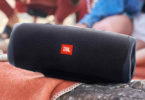
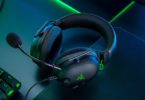
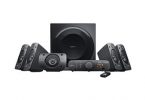
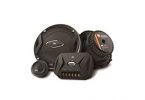
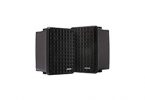
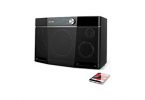
Leave a Comment